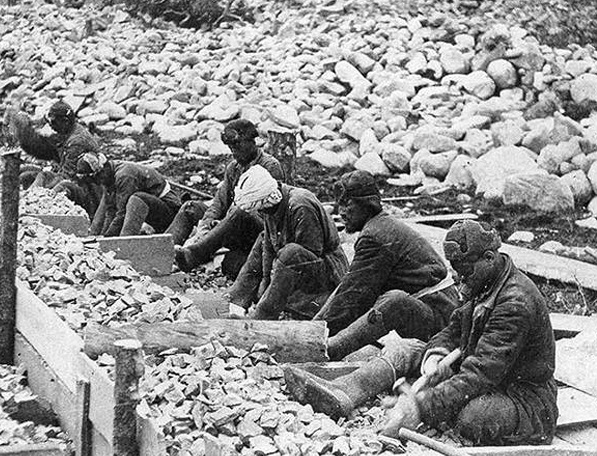Gangster riot in Lesoraid:

The reason for this largest uprising in the history of the Gulag, according to the investigation, was rumors about the upcoming mass executions of prisoners and freelancers. More than 70 paramilitary guards and rioters were killed in the uprising, and 50 prisoners were subsequently shot by the court. The revolt took place at the end of January 1942 in the camp point “Lesoraid” in Vorkutlag, located a few kilometers from the regional center of Ust-Usa in the Komi Autonomous Soviet Socialist Republic. Of the more than 200 prisoners, more than half were “political” prisoners, serving sentences under Article 58. The riot was prepared by the head of the camp, a freelancer Mark Retyunin, who had previously served a three-year sentence for banditry. From the autumn of 1941, Retyunin replenished the warehouses of the camp point with food and clothing, explaining his requests at the base by the possibility of isolating the “Lesoreid” from Ust-Usa due to the spring flood. As the surviving participants of the uprising later testified at the investigation, more than a dozen prisoners knew about the preparations for it in the camp, but there were no NKVD operatives in Lesoreid, so the Chekists heard about the riot only when it began. Judging by the testimony of the defendants in the “Retyunin case”, Retyunin, after disarming the guards and freeing the convicts, intended to seize the district center, and then, having reached Kozhva with an armed detachment, move by rail to Vorkuta. The plan was to liberate the camps that came across, thus replenishing the army of mutinous prisoners. According to the initiators of the Ust-Usinsk uprising, it was to expand to a gigantic scale and cover a large number of settlements and tens of thousands of Gulag prisoners, as well as the local population. On Saturday, January 24, Retyunin and his accomplices neutralized most of the paramilitary guards by tricking them into a bathhouse. The rest of the Vokhrov soldiers were disarmed, while one was killed and one wounded. The guards were locked in a vegetable store. Retyunin announced the beginning of the uprising to the prisoners, and a significant part of the convicts of the camp joined the rioters. Armed prisoners and freelancers (more than 80 people) dressed in Vokhrov fur coats loaded food onto several carts and headed for Ust-Usa. There were only 12 rifles and 4 revolvers for all the mutineers. Fighting in Ust-Usa In the village, the rebels seized the post office, the checkpoint. A third of the 38 freed convicts joined the rebels. Attempts to seize the shipping company, the police department and the airfield were unsuccessful. A total of about 20 people were killed in fierce fighting by both the attackers and the VOKhR riflemen, as well as the police. The commander of the neighboring camp point of Polya-Kurya, M. Polyakov, after receiving a message about the attack on Ust-Usa, sent a detachment of the VOKhR to help the defenders, which, in addition to rifles and guns, was armed with a light machine gun. As soon as he joined the battle, Retyunin’s group began to retreat from the village. About half of the rioters, who did not have weapons, were captured by the Vokhrovtsy, another 20 surrendered themselves. Destruction and capture of the remnants of the insurgents During the retreat from Ust-Usa, the Retyuninsky detachment defeated a company of the VOKhR, which practically did not offer any resistance to the convicts. Nevertheless, units of riflemen of the paramilitary guard continued to pursue the rebels and on February 1, after almost a day’s fighting, the main group, which included several other rebel commanders along with Mark Retyunin, was surrounded. Retyunin and five others shot themselves, killed three convicts, and two surrendered. Scattered groups of prisoners were then caught in the forests until the beginning of March. As a result of this mutiny, 42 prisoners and freelancers, as well as 33 Vokhrov members, were killed in the battles. Subsequently, 68 people were convicted of participating in the riot, 50 of whom were sentenced to death. The official assessment of what happened was reduced to the wording “bandit action”, although most of the prisoners-rebels were imprisoned under Article 58.
